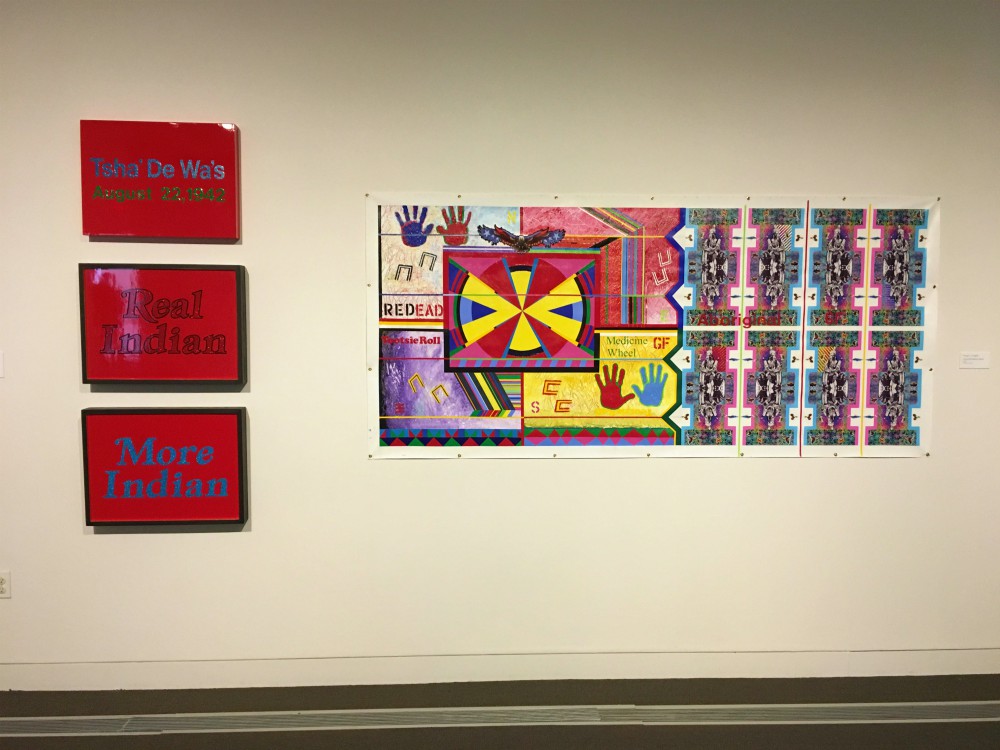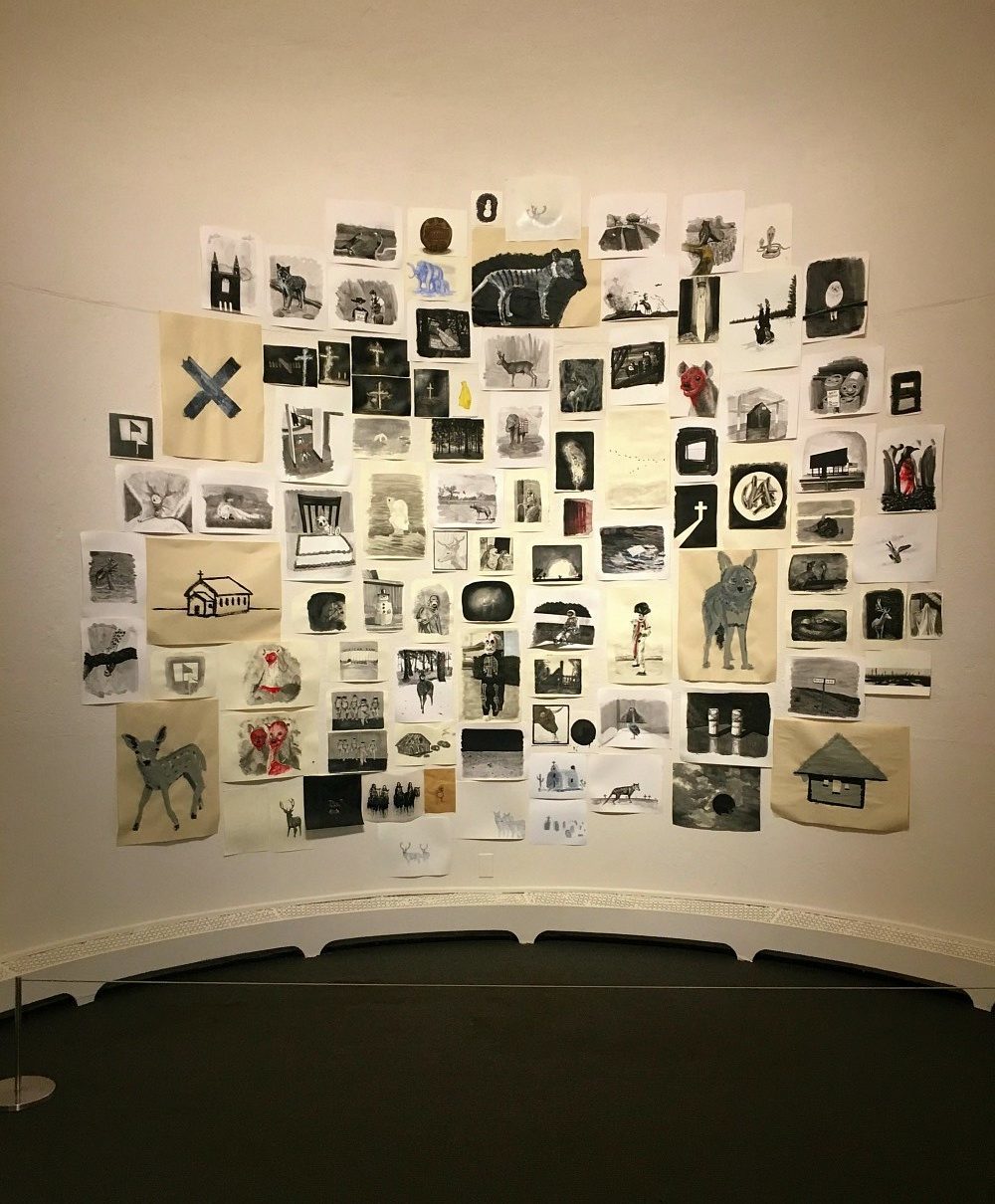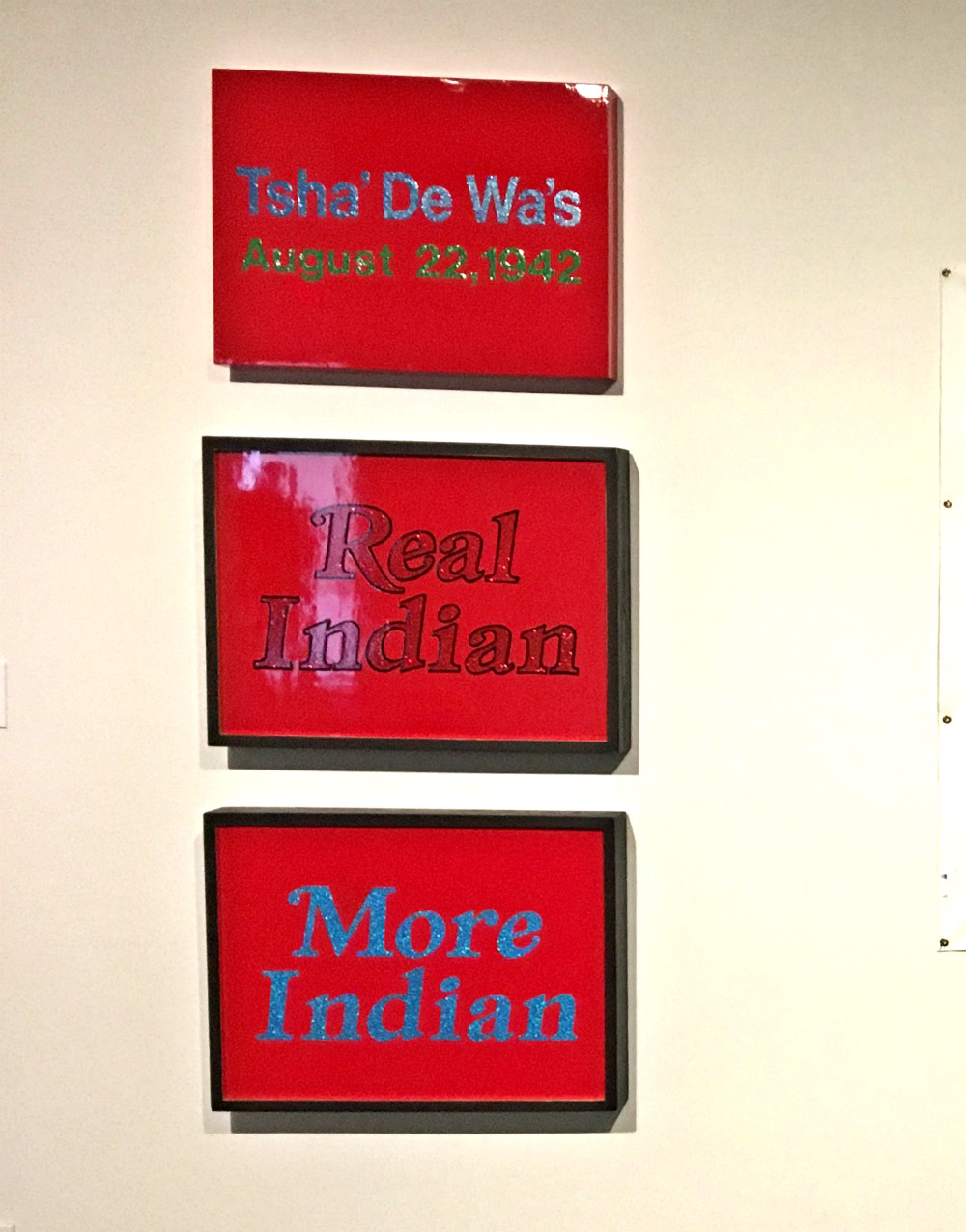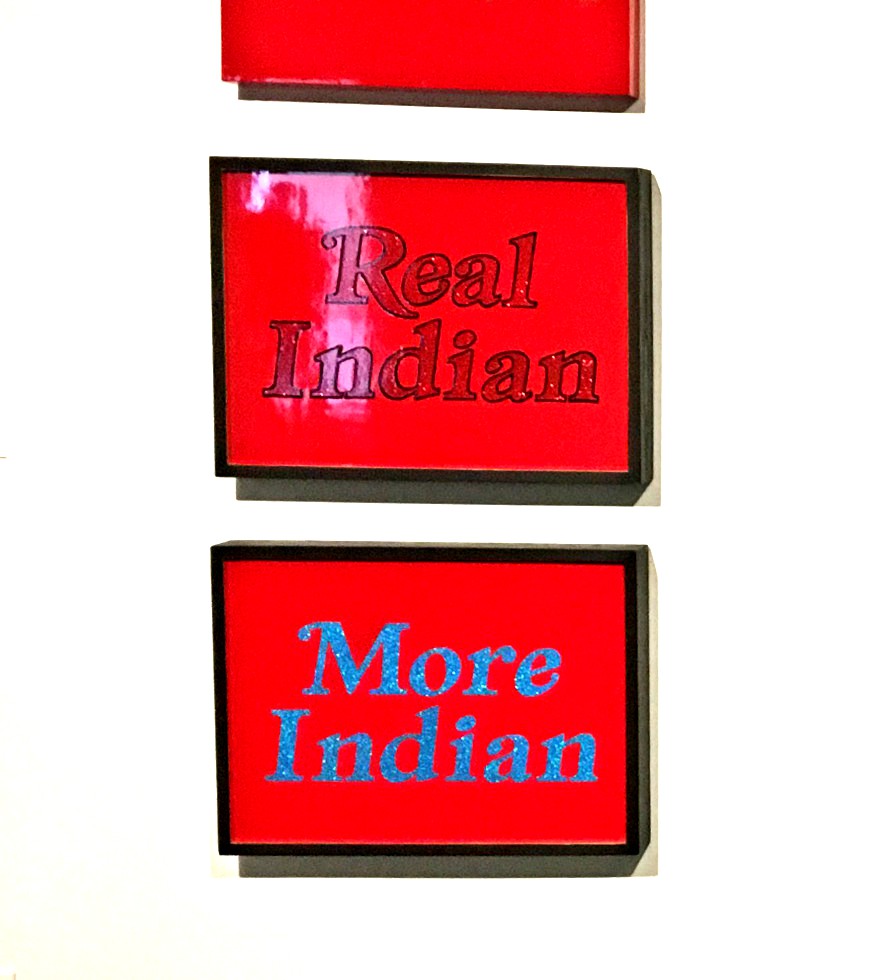This week's post is inspired by a recent book I finished, and the way its subject matter was reflected in experiences I had in the last days I was reading it.
As you read last week, the deCordova Museum is filled with local, contemporary artwork. Real Indian was one of the first pieces I walked up to once I stepped inside.
 Real Indian (middle) 2013, Emerging (top) 2010, More Indian (bottom) 2013, George C. Longfish
Real Indian (middle) 2013, Emerging (top) 2010, More Indian (bottom) 2013, George C. Longfish
It immediately made me think of the fiction book I was reading at the time, There, There by Native American author Tommy Orange — who weaves together several storylines that depict the various aspects and hardships faced by contemporary Native American peoples — the effects of the horrific settlement of the continent hundreds of years ago.
A few days later, I listened to a podcast about health issues that Native American peoples are currently struggling with across the US. The podcast's host interviews a different person each week to discuss a particular topic, and I was struck by the coincidence of the subject matter popping up for the third time in a span of a few days.
"Real Indian." It seems a ridiculous definition, you can tack 'real' onto the front of any word and you immediately question really, truthfully?
 Atlas by William Binnie depicts the violent legacy of slavery in our nation's past—a desolate landscape filled with wolves and trauma (deCordova Museum)
Atlas by William Binnie depicts the violent legacy of slavery in our nation's past—a desolate landscape filled with wolves and trauma (deCordova Museum)
And that's exactly George Longfish's and Tommy Oranges' point — our perception of real has been so twisted, romanticized, destroyed, and re-written that we can't in good faith use that word to indicate a truth.
Between the book and these artworks, I've been thinking more about the truth and accuracy in information that is passed onto us about our surroundings, our histories, and the countries we live in.
And I keep coming back to the same question: What do we know about the indigenous peoples from the area we grew up in, are living in or currently visiting?
There are hardly any places on this planet where there aren't underlying stories to the ones that are always told and best known — how do we find them and how do we make those stories more well known?
How do you try to be mindful about the places you visit and the people who live(d) there?


